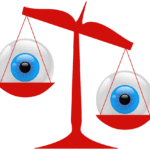Monthly Archive:: June 2016
25 Jun 2016
News values reconsidered, or, why ‘man bites dog’ matters

How do journalists decide if a story is worth reporting? They consult the list of possible news values — easy-peasy, since everyone agrees there are just 10 … or 12 … or a different 12 … or eight … or nine-ish … or five … or seven … I confronted that confusion when I started
17 Jun 2016
Teacher’s guide: ‘Startup,’ the podcast

Two things I learned as a business journalist: One, business news can be deathly boring. Two, the best fix is to tell good stories. That’s why anyone teaching a class on entrepreneurialism would be smart to use the first season of “StartUp,” the podcast from Gimlet Media. Gimlet is the brainchild of Alex Blumberg, a
15 Jun 2016
The business of publishing, Part 2

This post is about how to pay for journalism. SPOILER ALERT: I do not solve the equation and save the business. While I was preparing to teach a course on the business of (journalism) publishing, smart people advised me to forget a textbook. Instead, they said, use the news. Riff off industry developments. I created
09 Jun 2016
The business of publishing: Lesson for a journalism teacher

Sure, I said, I can teach the Business of Publishing. Granted, all I remember learning about it in college was that libel is expensive, so it’s cheaper to be accurate. But I was a financial journalist for years. And, like every journalist of my generation, I got a crash course in the finances of journalism
08 Jun 2016
Sketchnoting & the big box of crayons: Lesson for a journalism teacher

Journalism, done right, is storytelling. The upside to the increased demands on reporters — to be proficient in text and on video, with photos and maps and social media and on and on — is that journalists have more and more tools to tell stories well. In other words: a big box of crayons. A
02 Jun 2016
Lesson for a journalism teacher: Meeting them where they are

The assignment for the students — in their first college journalism writing class — was the kind I remembered from my own student days. I gave them facts about a fire: who saw it first, where it happened, when, damages, etc. They had to write a first paragraph, a summary “lede.” The summary lede is
